Ben White cannot be pigeon-holed as a person, nor as a footballer. Before joining Arsenal, White was predominantly a centre-back, but played in midfield at times for both Leeds and Brighton. His final season on the south coast — the one that convinced Arsenal to part with £50m to sign him — saw him mostly used in a hybrid role on the right of a back three, driving forward down the right to support wing-back Tariq Lamptey.
Having played as something between centre-back and right-back that season, his transition to full-time right-back at Arsenal shouldn’t be so surprising. However, the seamless way he has taken to the role has allowed Mikel Arteta to slowly expand White’s remit over time and his performances are now absolutely integral to the development of the team.
Right-back doesn’t mean right-back now as it did 20 or even 10 years ago. Speaking to Sky Sports back in October, White talked about his adaptability and the specific challenges of playing the position under Arteta:
“I could play full-back, I could play anywhere across the backline or in centre mid, but playing full-back the way he wants is, I think, completely different to any other manager.
“To play full-back for him, you’ve got to be a centre mid, a centre-back, a winger, a No 10. So, it’s been about developing the whole of my game, rather than just as a full-back or a centre-back.”
That development has never been more obvious than the last couple of months. And the key thing is the demands on White — to be a centre-mid, centre-back, winger, no. 10 — chop and change within a matter of seconds on the field, let alone across games, yet he has been handling it without any issue at all.
Looking at heatmaps from a few recent fixtures and the changing demands of White are obvious. In a huge game against Liverpool he played a traditional role, mostly staying wide and supporting Bukayo Saka in the final third. Against West Ham he tucked inside more often, making up for the absence of Oleksandr Zinchenko from the other side; against Sheffield United it was all about supporting Saka in the final third; and there was more of the same, but with more defending to do, against Brentford.

Four games over two months all in the same position but with a different purpose to the team and different responsibilities to best support his team-mates.
Below is one of the situations Liverpool pressed in at the Emirates, with White lining up where you’d expect your right-back to be …
 … but as the ball went long, he tucked inside rather than joining the attack …
… but as the ball went long, he tucked inside rather than joining the attack …
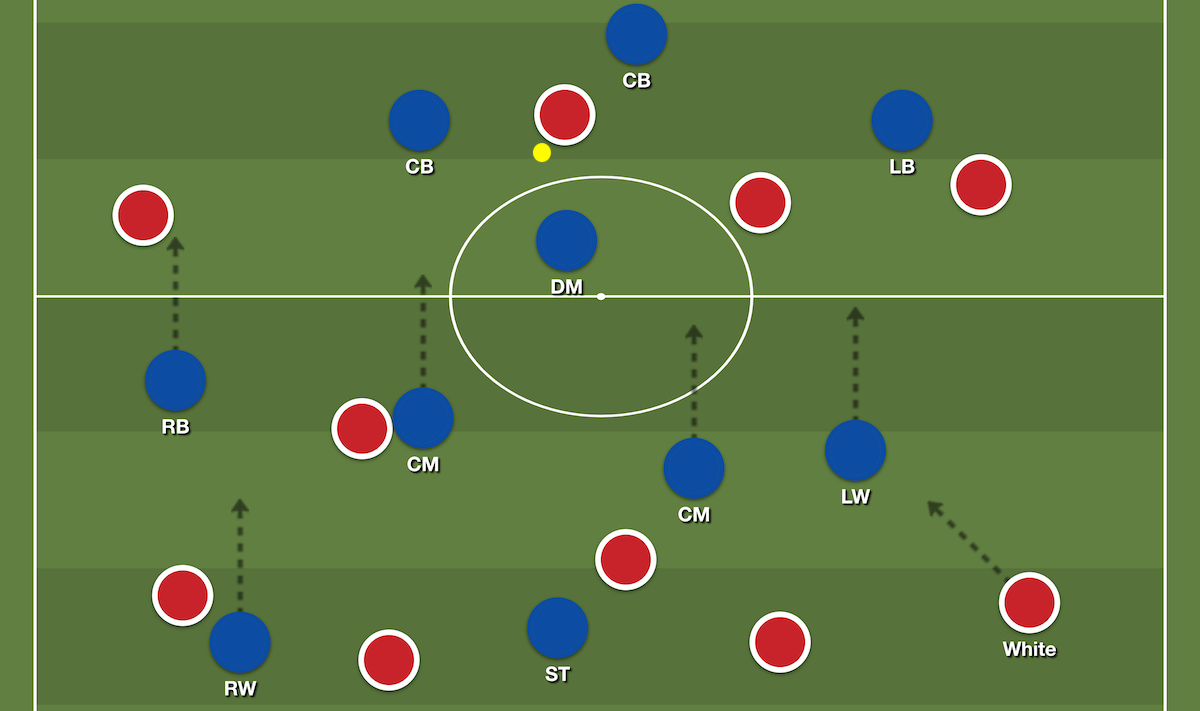
White’s first job isn’t to help the attack here but to protect the centre of the pitch. With the ball on the left he tucks in on the right, contracting the space, more or less marking the opposition left winger in case possession is lost, a) to prevent a counter-attack and b) to be aggressive in the counter-press and help Arsenal sustain an attack.
It didn’t happen in the specific example of the Liverpool press above but White’s next job, when the ball is on the right in the final third, is to provide support for Saka from a central position, either by overlapping to provide an option (or take a defender away) or by hanging back in the vacant space as Saka is defended two-on-one.
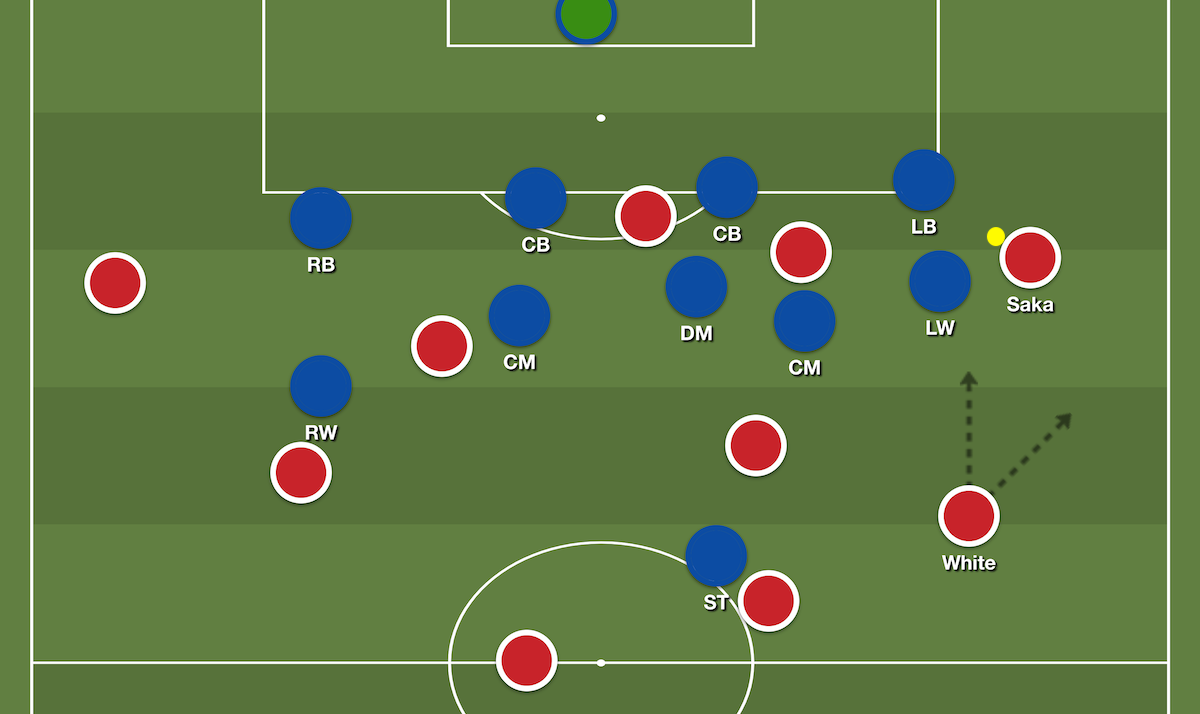
Both runs — or rather, one decision not to make a run and then one decision to overlap — led to assists against Brentford. For the first goal he plays the ball out to Saka and then hung back in the space as Brentford’s left-sided midfielder looked to help double up on the Arsenal winger.
Sometimes it’s about not making a run to find yourself in space, especially when opposition defences are as terrified as they are of a player like Saka, whose reputation is such that he didn’t even really need to do anything you or I couldn’t have done to tee up White’s assist.
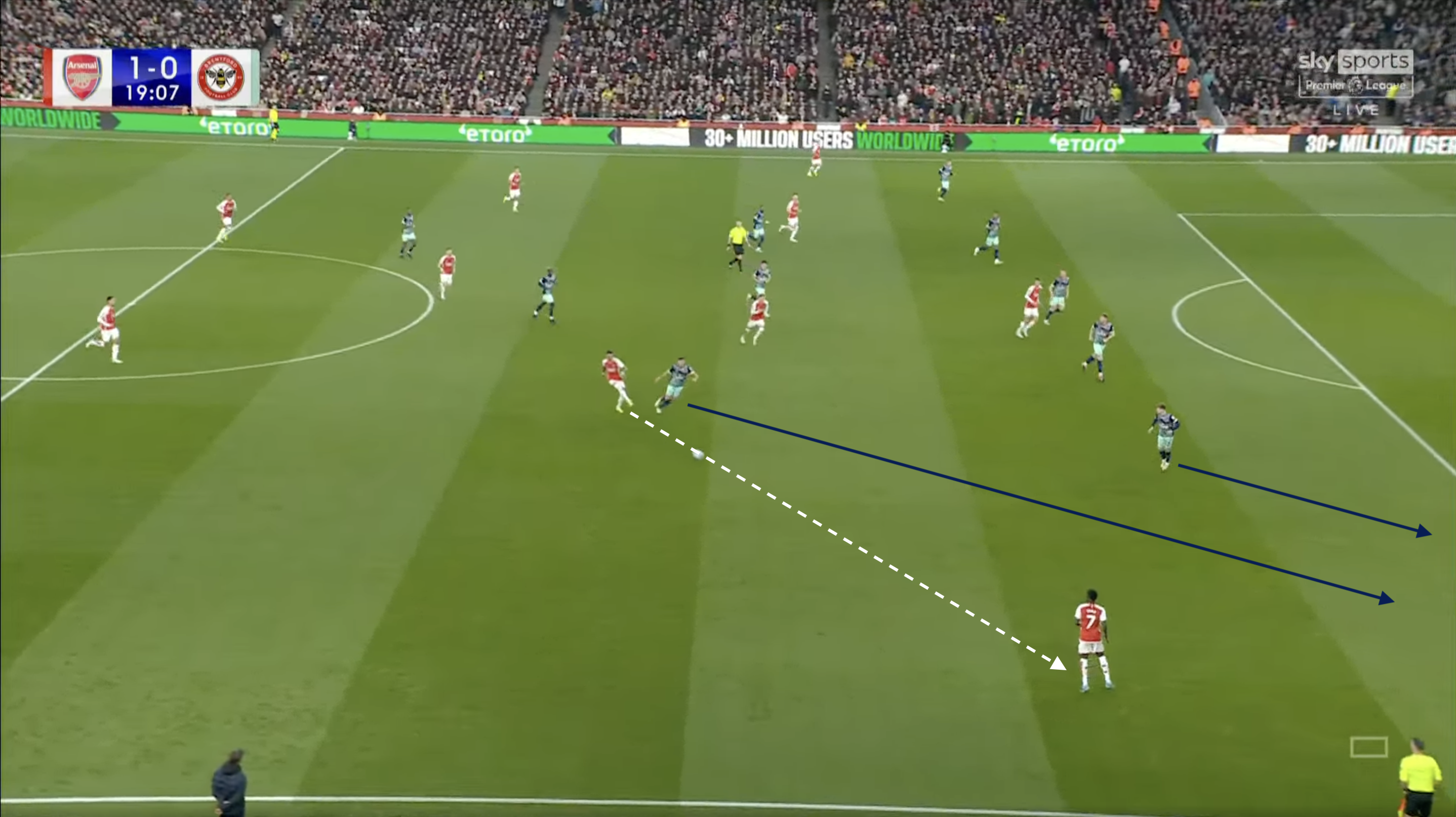

For the second, White exchanged a number of passes with Martin Odegaard (and William Saliba) to push the visitors further and further back before finally making a darting run to the byline. It’s so often the decision making — when to keep it simple with the passing, when to make the run, when to stay — that makes the difference at the top level and White rarely misses a beat.
Going back to Liverpool, he’s superb at negating the press, which make him ideal for receiving the ball and helping Arsenal build up whether that’s on the right, in midfield, or in more of a back three. White’s quick feet, confidence and calm are huge in helping him play out of tight spots, which is massive to negate the press from a team like Liverpool, who must have smelt blood on a couple of these occasions.
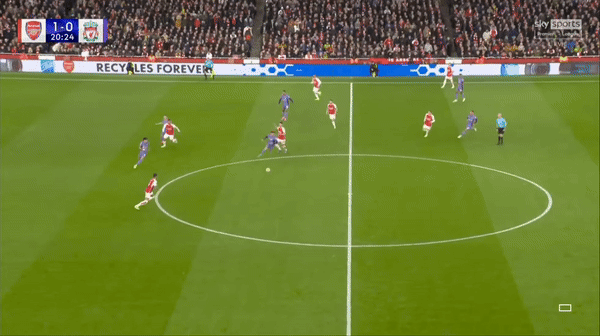 That ability to wriggle out of space can nullify the press entirely and Liverpool’s modus operandi when looking to grab a foothold in big games is to press harder and harder. White himself may not have been directly involved, but the first two goals in that game both came from the 26-year-old forming a back three with Saliba and Gabriel, drawing Liverpool on before Arsenal could play through and over them.
That ability to wriggle out of space can nullify the press entirely and Liverpool’s modus operandi when looking to grab a foothold in big games is to press harder and harder. White himself may not have been directly involved, but the first two goals in that game both came from the 26-year-old forming a back three with Saliba and Gabriel, drawing Liverpool on before Arsenal could play through and over them.
Having that back three as a safety net allows Mikel Arteta to give the players more flexibility upfield, whether that’s Odegaard roaming, Havertz dropping deep to combine, or Martinelli making a run for the ball over the top, without fear of Arsenal’s defensive shape being compromised.

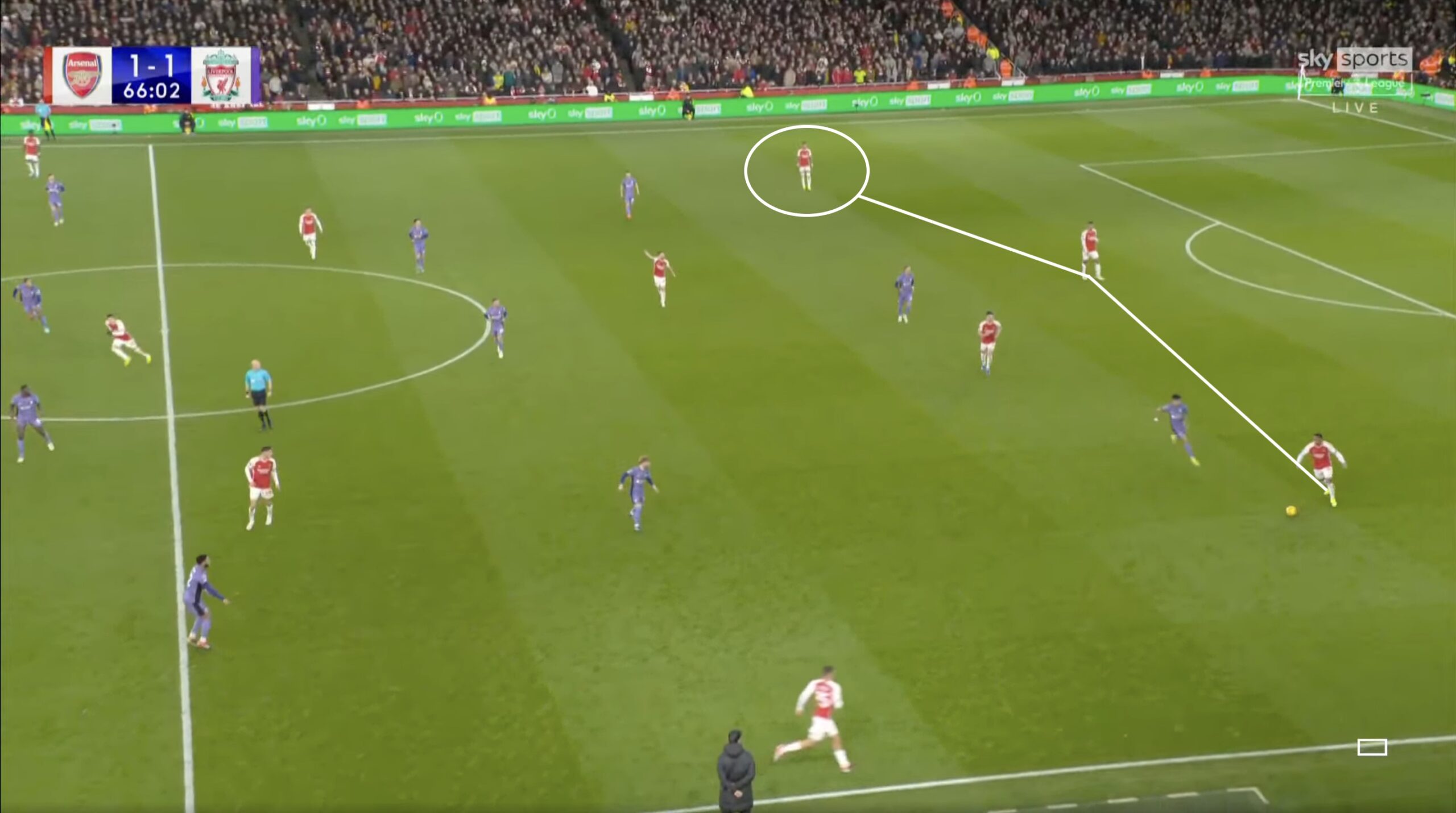
The brilliance of White the athlete means he can do it all at once. We saw it on the opening day against Nottingham Forest, when he played centre-half in a back three but still made an effort to overlap Bukayo Saka when he could, but we saw it in another way against West Ham, where White frequently tucked into midfield alongside Declan Rice but still made the effort to help Saka on the right yet again.
Odegaard signalled to White early on to tuck inside and he did, with a fun knock-on effect the fact that the makeshift back three tilting the other way leaves William Saliba on the outside of it, giving the Frenchman more freedom to stretch his legs and use his exceptional ability to carry the ball.
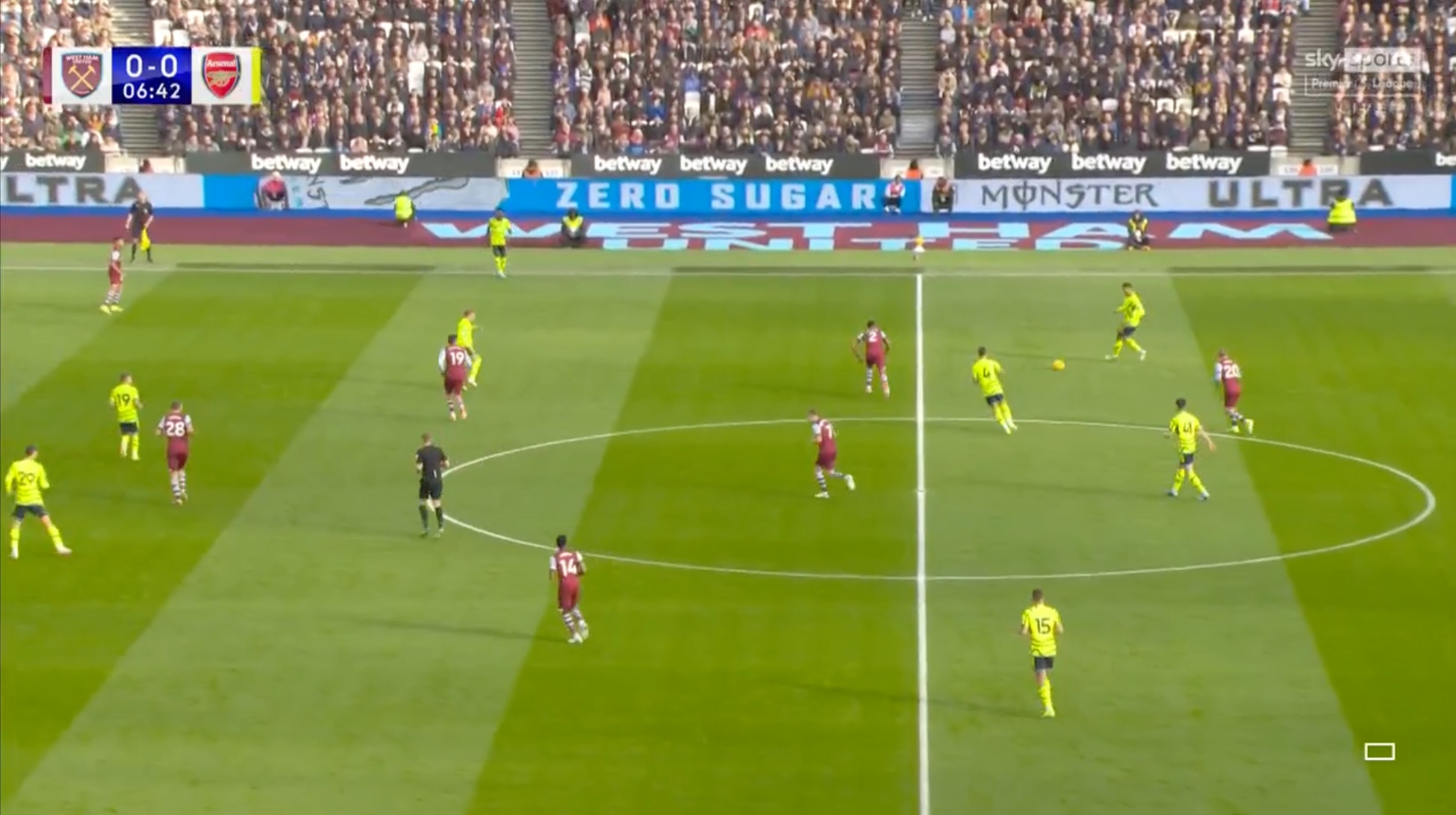

But White didn’t just tuck in. He did everything else he usually does on top of that. From midfield he would look for Saka out wide …
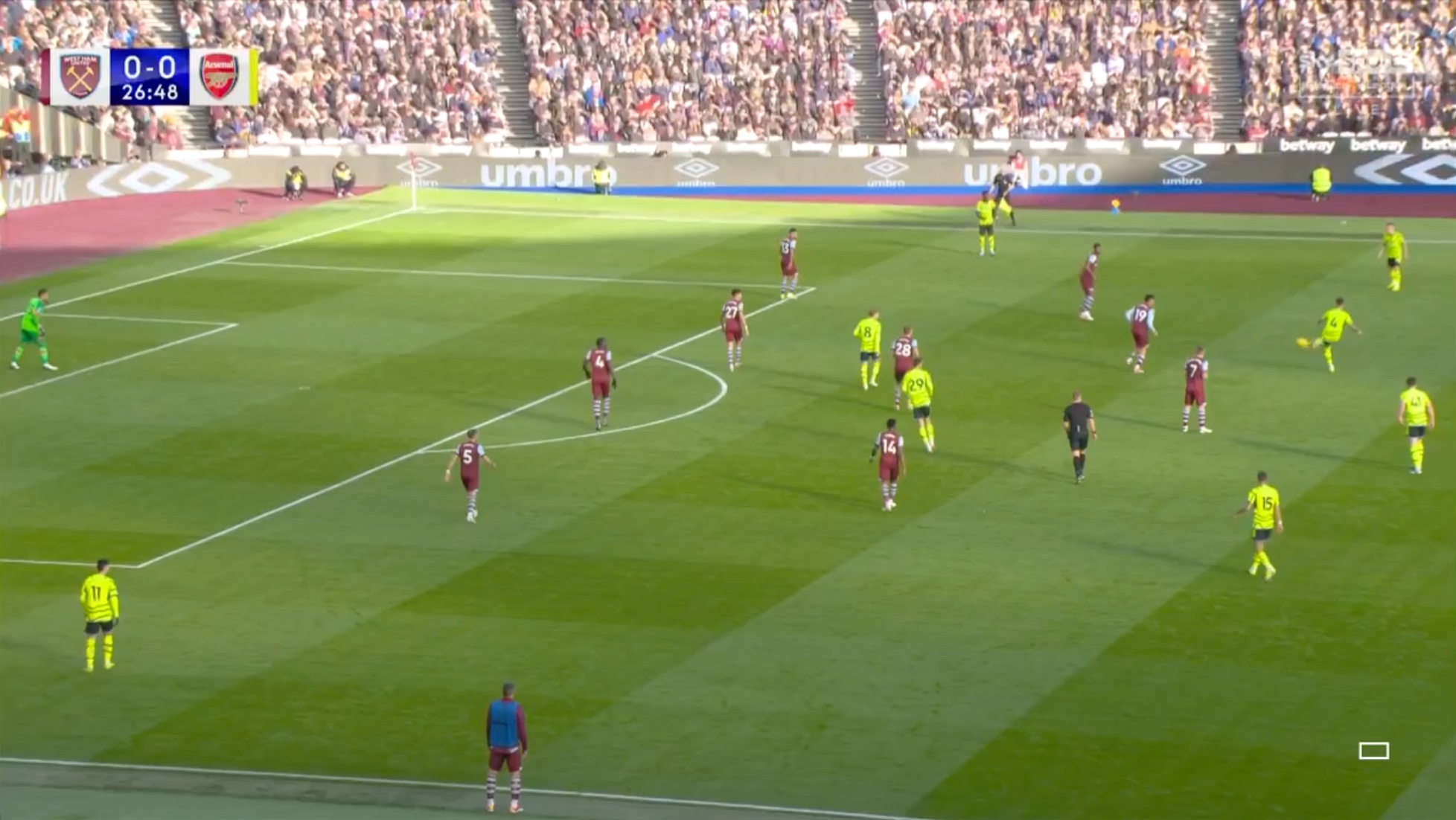
… before, as long as it didn’t leave Arsenal compromised at the back, providing an option on the overlap once West Ham were had dropped deep enough to comfortably leave Saliba and Gabriel with a two-on-one anywhere outside the final 30 yards of the pitch.
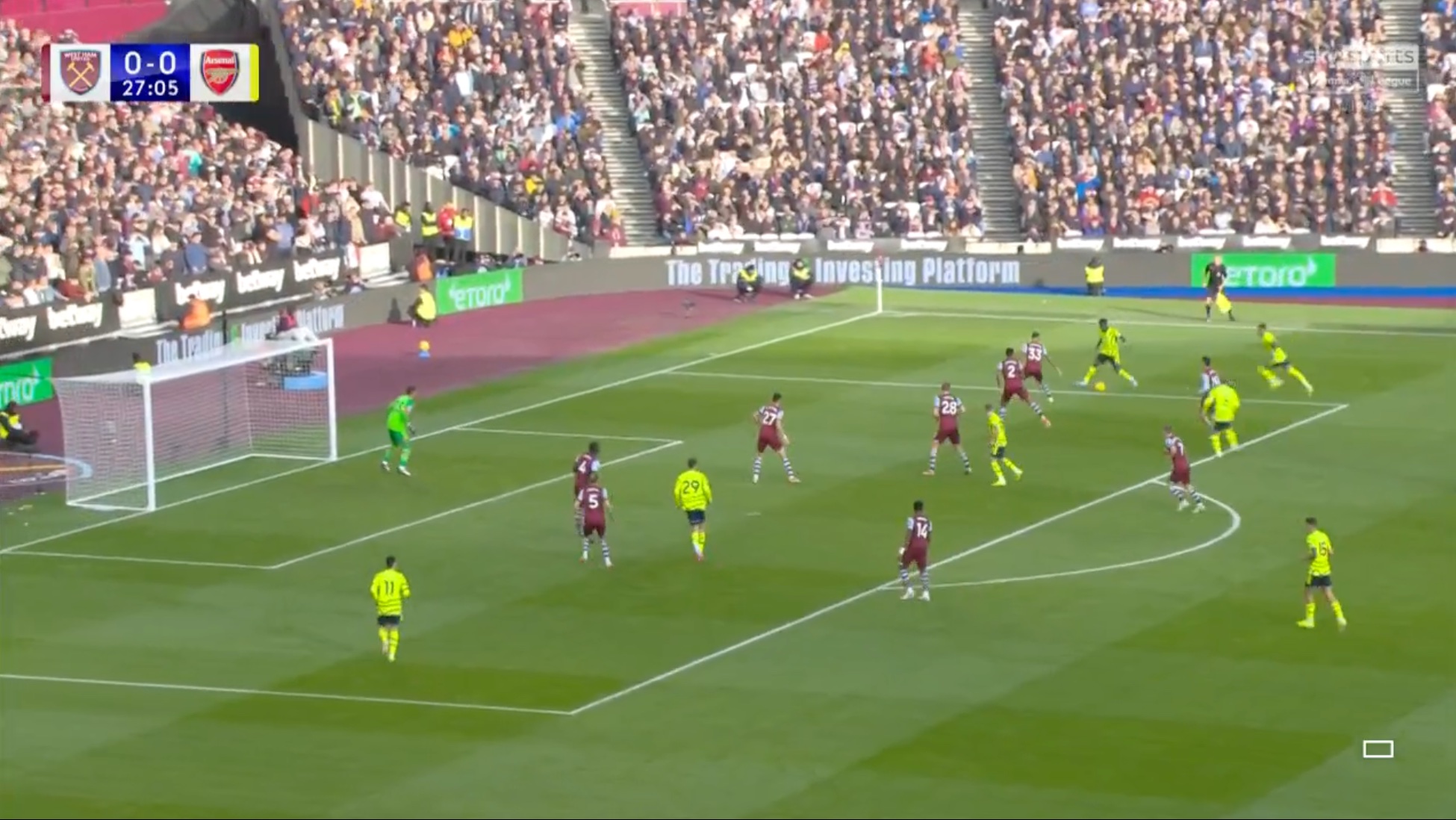
Minutes after that example White went one further, again spraying the ball out to Saka …
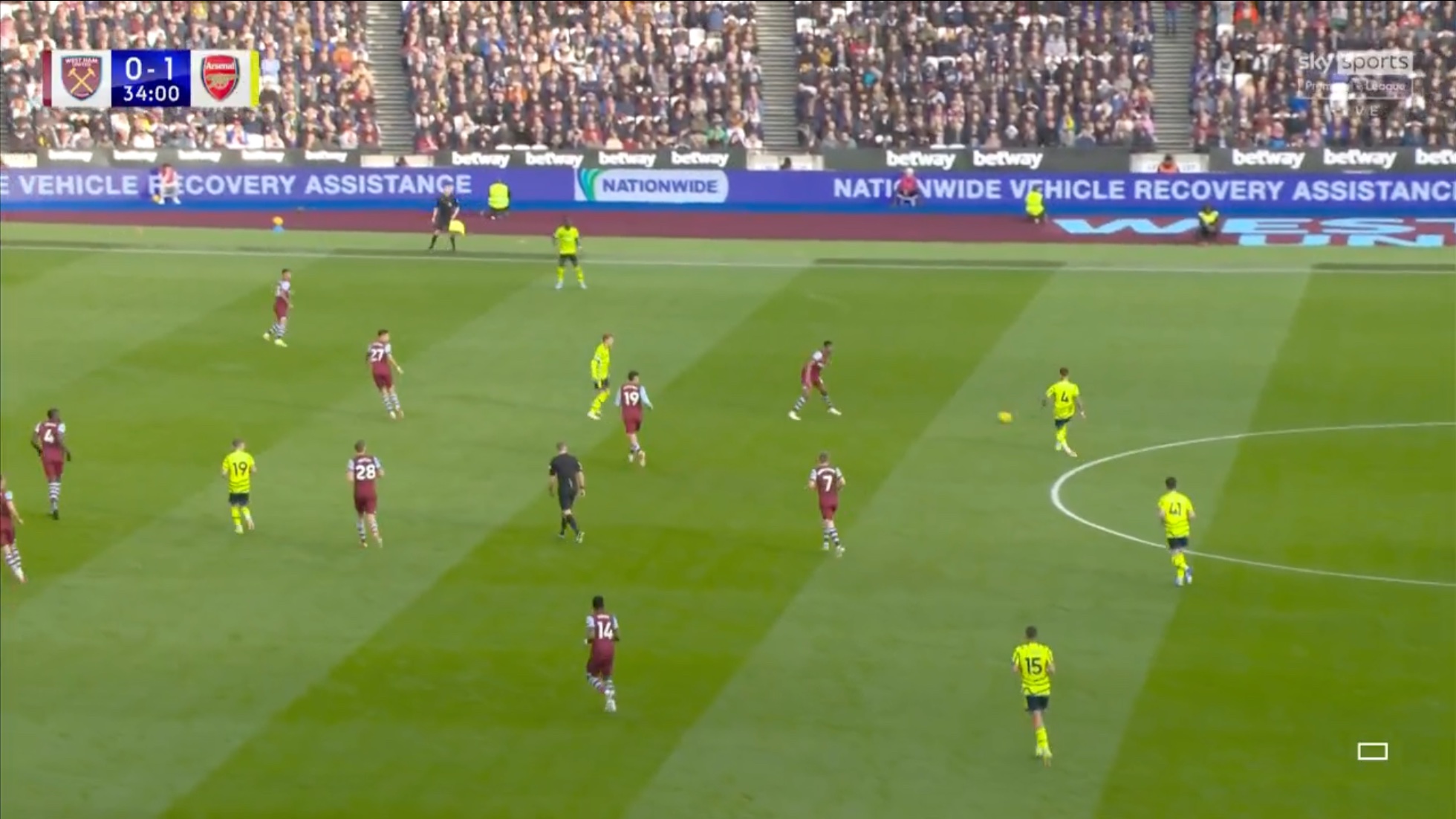
… then offering an option to receive the ball in the position he would assist from against Brentford a few weeks later …
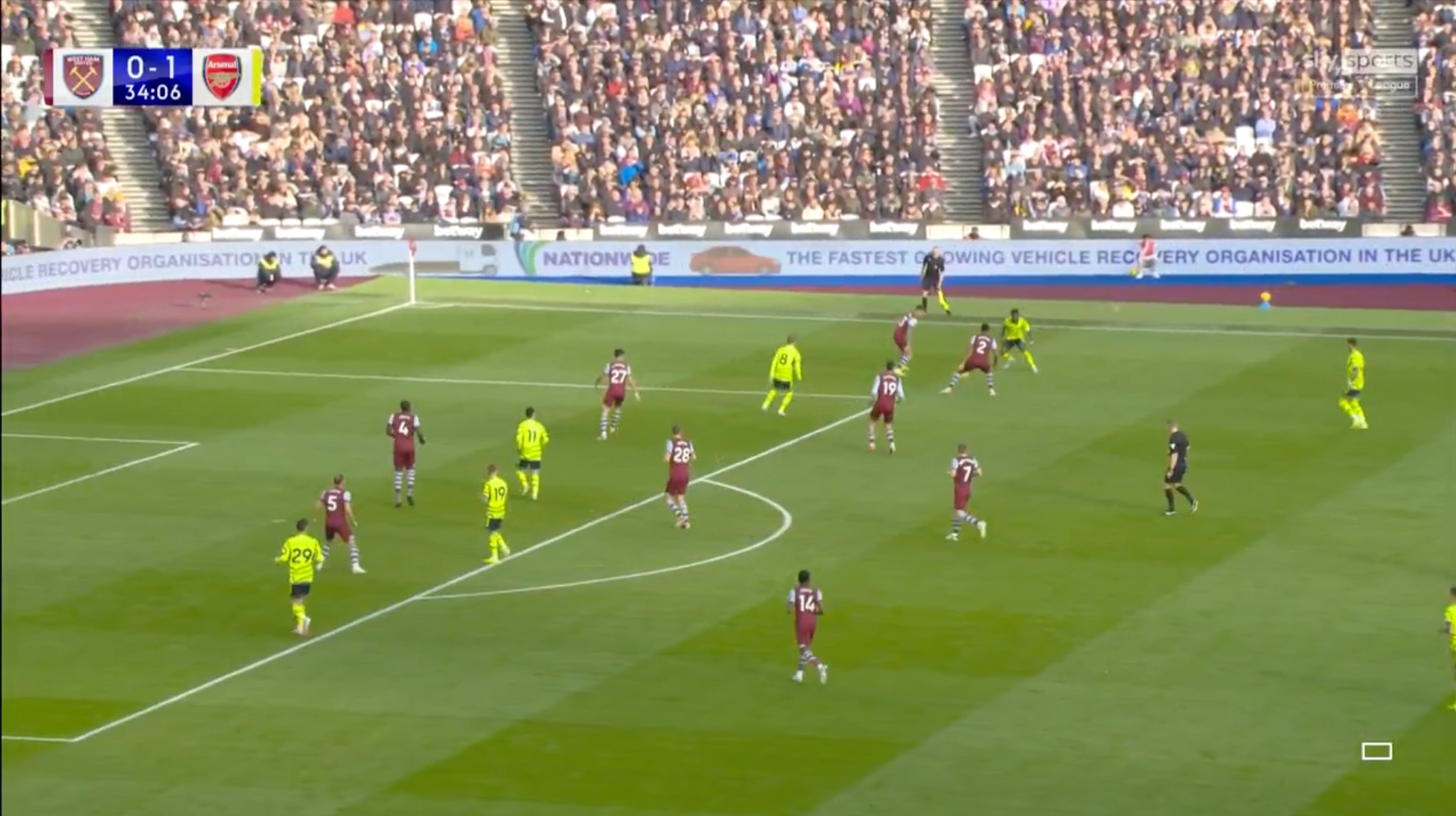
… before overlapping on the right once West Ham had again been pushed deep into their own box by Saka’s combinations with Odegaard.
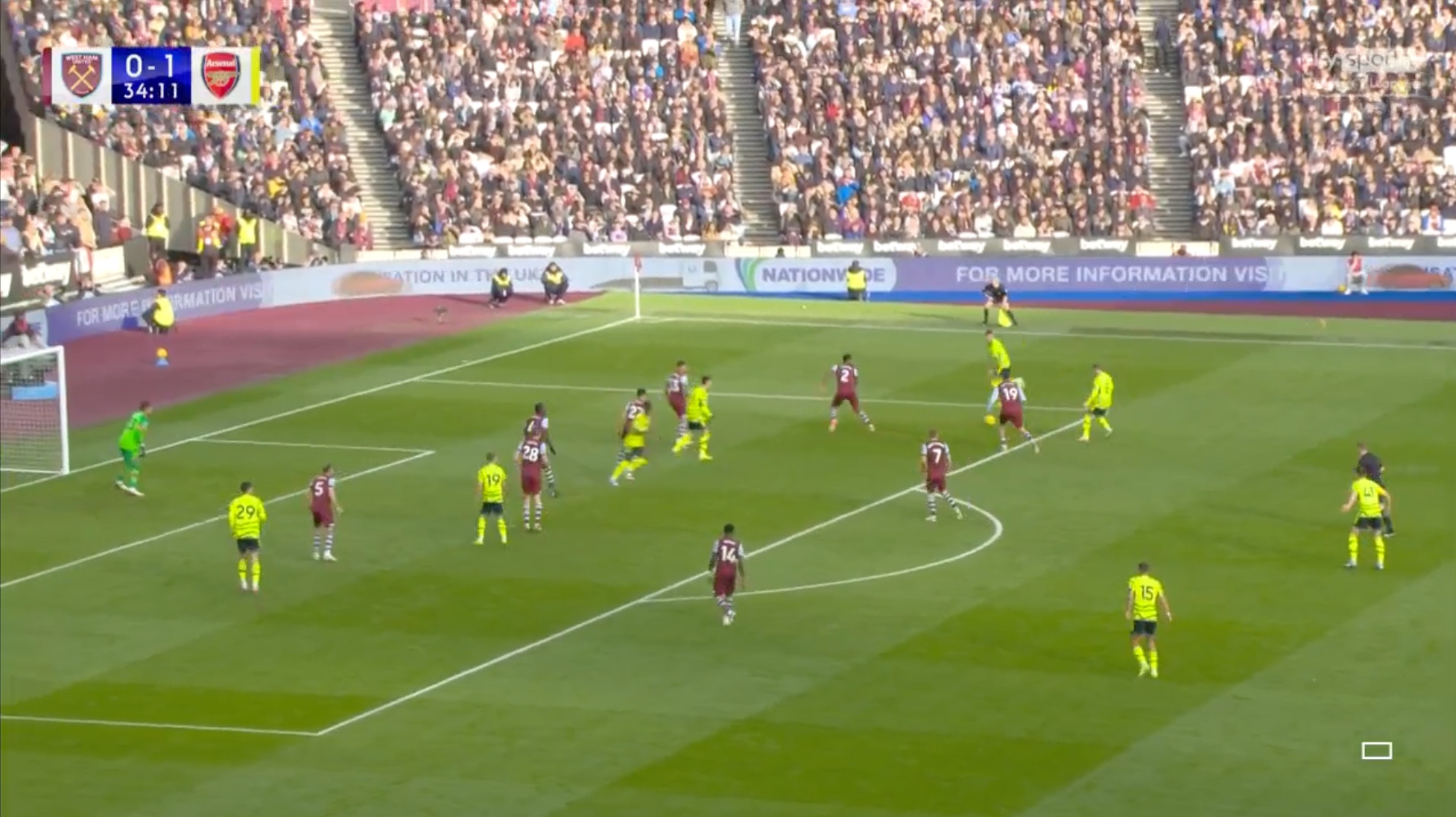
And that’s the thing: White not only does multiple things to a world class level but he can do them all at once. In his words, he can “be a centre mid, a centre-back, a winger, a No 10.” from right-back but I’d go one further. He can be those things from right-back within the blink of an eye.
It’s not just that White can do all the things asked of right-backs in the modern game — play as a third centre-half, tuck into midfield, provide the width and crossing ability of a winger — but that he knows when to switch from one to the other depending on what the game needs, where his team-mates are, and how the opposition can be exposed or could expose us.
Best-made plans could become a bit predictable at times for Arsenal in 2021/22 and 2022/23, but this set of players are finding increasing freedom as they become better and better at dominating games and finding solutions without leaving the opposition space to breathe. In that, the development White has made embodies the best of this current Arsenal team as well as any of his team-mates.
Here’s to 4+1 more years.
>>> Read full article>>>
Copyright for syndicated content belongs to the linked Source : ArseBlog – https://arseblog.com/2024/03/tactics-column-swiss-army-white/































